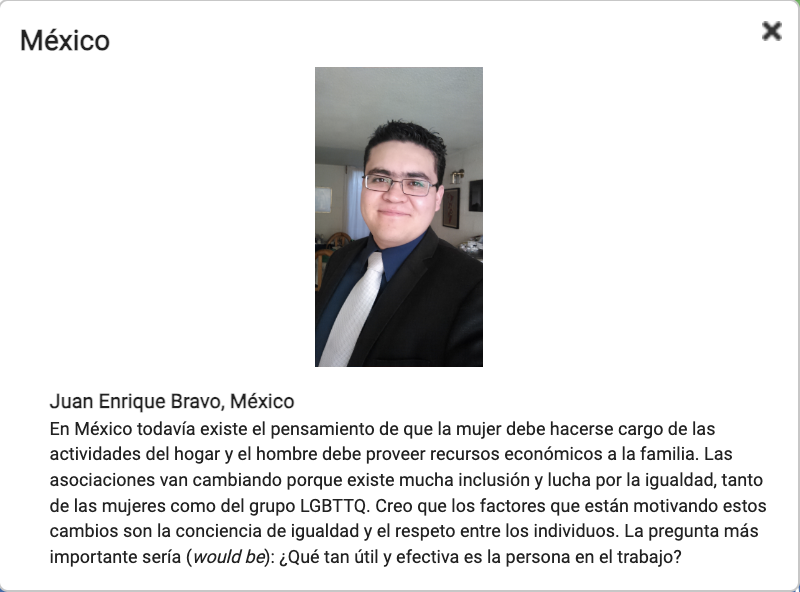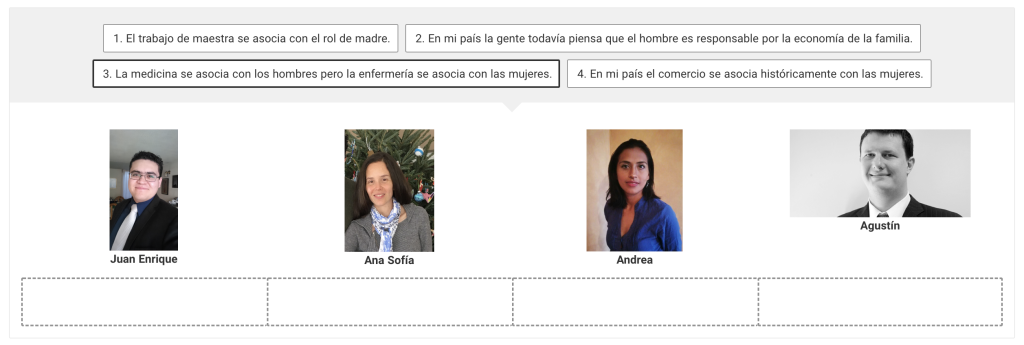Interpretive, Interpersonal, and Presentational Modes of Communication
Exploring Culture
Like Spanish 101, I was introduced to different cultural perspectives through the multiple discussions and online activities that the class participated in. Lingro Learning also introduced my knowledge of basic Spanish and the Spanish-speaking world. These exercises taught me about Latin American and Spanish culture and people.
Again, I value the lessons learned as they can benefit me if I need to communicate with someone who speaks Spanish. The learning activities were a fun and enjoyable way to learn and get to know about another culture. A video article from our class discussion mentioned other Spanish colleges and how they compare to United States colleges. I noticed similarities and became interested in learning more about the cultural setting at these colleges. We also learned from the several activities on Lingro Learning, where we would read and research about the Spanish-speaking world.
Engaging in Communities
In my intermediate community life, I work for a company that recruits a diverse group of people; some speak fluent Spanish and barely any English. I value learning and understanding Spanish to not only help my co-workers but also be able to, more recently, add the language to my resumé to be looked upon as an asset to an organization.
Interpersonal Communication
Just like in Spanish 101, post-discussions with other students were very helpful for my learning and interpretation of other cultures and languages (Spanish). Another activity assigned to students was Flipgrid recordings, where we were given instructions to record our response to a recording of the professor and add questions to the end of our recording to interact with the rest of the class.
Presentational Speaking
Flipgrid would be considered a presentational speaking and interpersonal communication exercise. With presentational speaking, students can use the platform to practice speaking Spanish and post on the class board to have discussions with their peers.
I enjoyed these presentational speaking practices as they challenged my knowledge and quick response, but I would have to do a practice run a few times before the final conversation.
Presentational Writing
On Lingro Learning, students practice presentational writing with an exercise that allows them to type out several sentences in Spanish with a prompted question.
With this, I can apply words that are difficult to spell to the short paragraph assignment. I also excelled in challenging activities by practicing how to pronounce and spell words that expressed the thoughts that I attempted to convey.
Interpretive Listening
In our class, students can use a platform called Lingro Learning, which enables students to listen, read and interpret, write, and speak in Spanish. With the interpretive listening activity, we are given a recorded question or statement in Spanish and then prompted to answer in Spanish, English, or even with a picture that best fits. I had a previous screen recording from Spanish 101 and inserted it below:
https://drive.google.com/file/d/1vQVsohWwaO9XmgfFwMFsxZ4E3Mri8q1m/view?usp=sharing
Interpretive Reading
On Lingro Learning, we have articles in complete Spanish and are asked to interpret them and/or answer appropriately in Spanish or English. I’ve displayed a screenshot of this activity from Spanish 102 below:


Like Spanish 101, these activities give students the practice they need to excel in this course. With this, we were assigned to interpret the following short paragraph, on the left, for each person and complete the description for each individual on the right. I found these interesting because the only unfamiliar words are in parentheses, which was helpful for any difficulties that may emerge when completing the assessment on the right. I’ve grown with every activity as it demonstrated my ability to interpret and understand the language.